Tutorial: Searching and Bookmarking for Television History
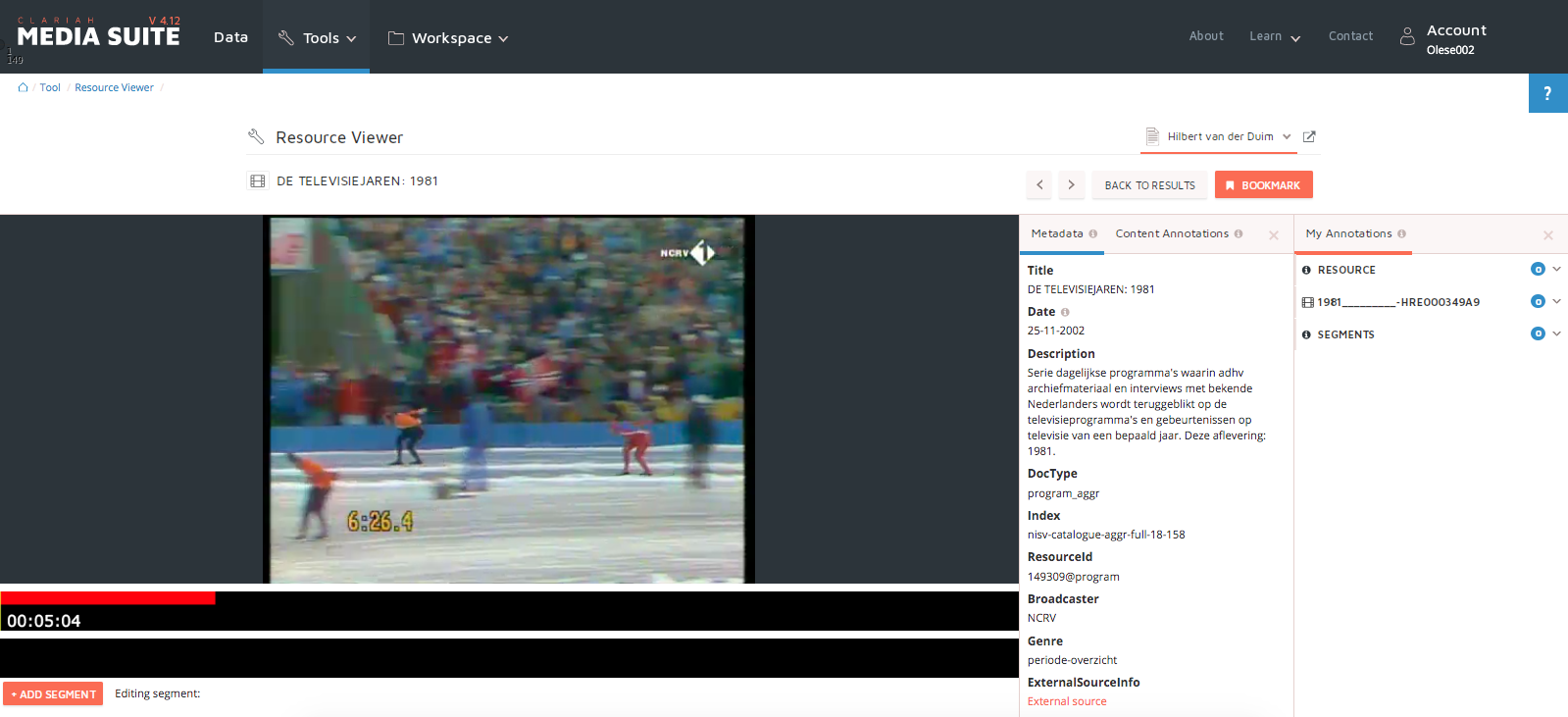
Tutorial for CLARIAH Media Suite V 4.9
Tutorial made by Christian Olesen, April 2020
Tutorial Description, Case and Objectives
This tutorial introduces you to using the CLARIAH Media Suite’s search tool and bookmarking functionality for television studies and/or television history research. Upon completing this tutorial, you will have learned to use the Media Suite for:
-
Searching and building a corpus consisting of television materials from Netherlands Institute for Sound and Vision’s Television Collection
-
Bookmarking and entering items into a personal user project
Before beginning this tutorial, it is a prerequisite that you know how to log in to and create a user project in the Media Suite. If you are not yet familiar with these aspects of using the Media Suite, please consult the tutorial “Logging In, Workspace and Creating a User Project”.
This tutorial revolves around the famous clip of Dutch ice skater Hilbert van der Duim’s participation in the World Championship in Oslo in 1981. In a 5km run against the Norwegian Amund Sjøbrend, Van der Duim crosses the finish line having just passed his rival. Thinking he has won, Van der Duim triumphantly raises his hands into the air. Yet, what he does not realize is that there is still one round to go. Meanwhile Sjøbrend continues at full speed and goes on to take the victory.
Van der Duim’s blunder has become an iconic television moment because of the hilarious mistake and the Dutch commentator Leen Pfrommer’s reaction that quickly switches from praising Van der Duim’s achievement to shouting that he still has a round to go (“Hilbert jongen, je moet doorrijden! Wat ben je nou aan het doen?”). The moment’s legend continues to linger on and is continuously reused in television broadcasts. For this reason, it lends itself particularly well to analyzing how a clip becomes iconic and how it is reiterated and presented differently over time. In this tutorial, you will make a corpus of items that reiterates this moment in different variations.
Types and levels of teaching and research
The functionalities described in this tutorial are essential for using the Media Suite in any type of course work or research on all levels. Moreover, the tutorial specifically introduces you to ways of using the Media Suite that support television history teaching and research that aim at critically evaluating processes of canon formation and iconic moments in broadcast history.
Prerequisites
Before taking the steps described below, make sure that you have logged into the Media Suite and created a user project. You may name your user project in whichever way you like. In this tutorial, the example user project will be named “Hilbert van der Duim” focussing on the case described above.
Steps
1. Search tool Television Collection NISV
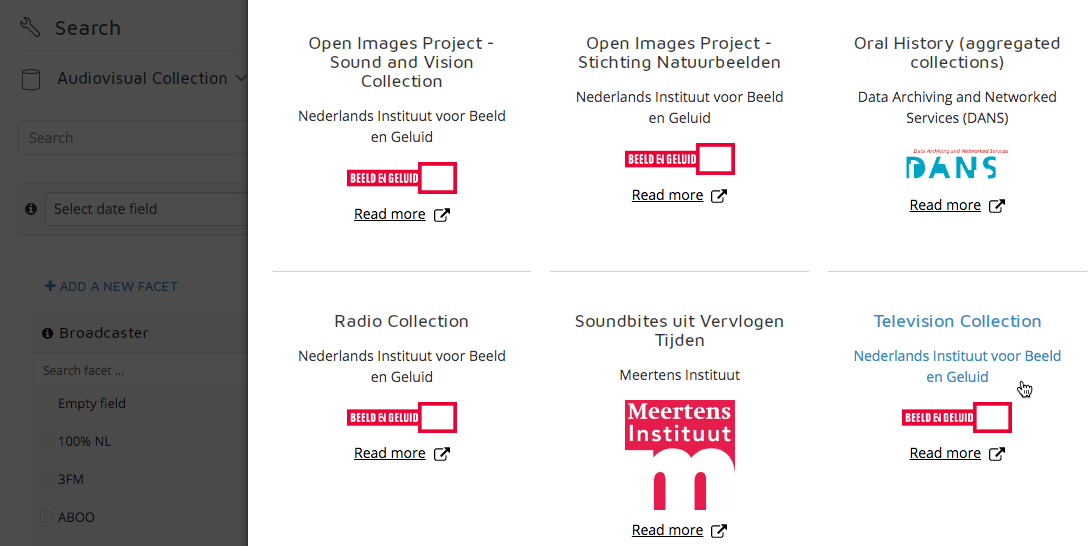
-
Hover over “Tools” tab
-
Select “Search” from the drop-down menu
-
Set active project in upper right corner and choose the user project you wish to add items to
-
Click “Select Collection” in the upper left corner
-
Select Television Collection from the drop-down menu
2. Find Items in the Television Collection I
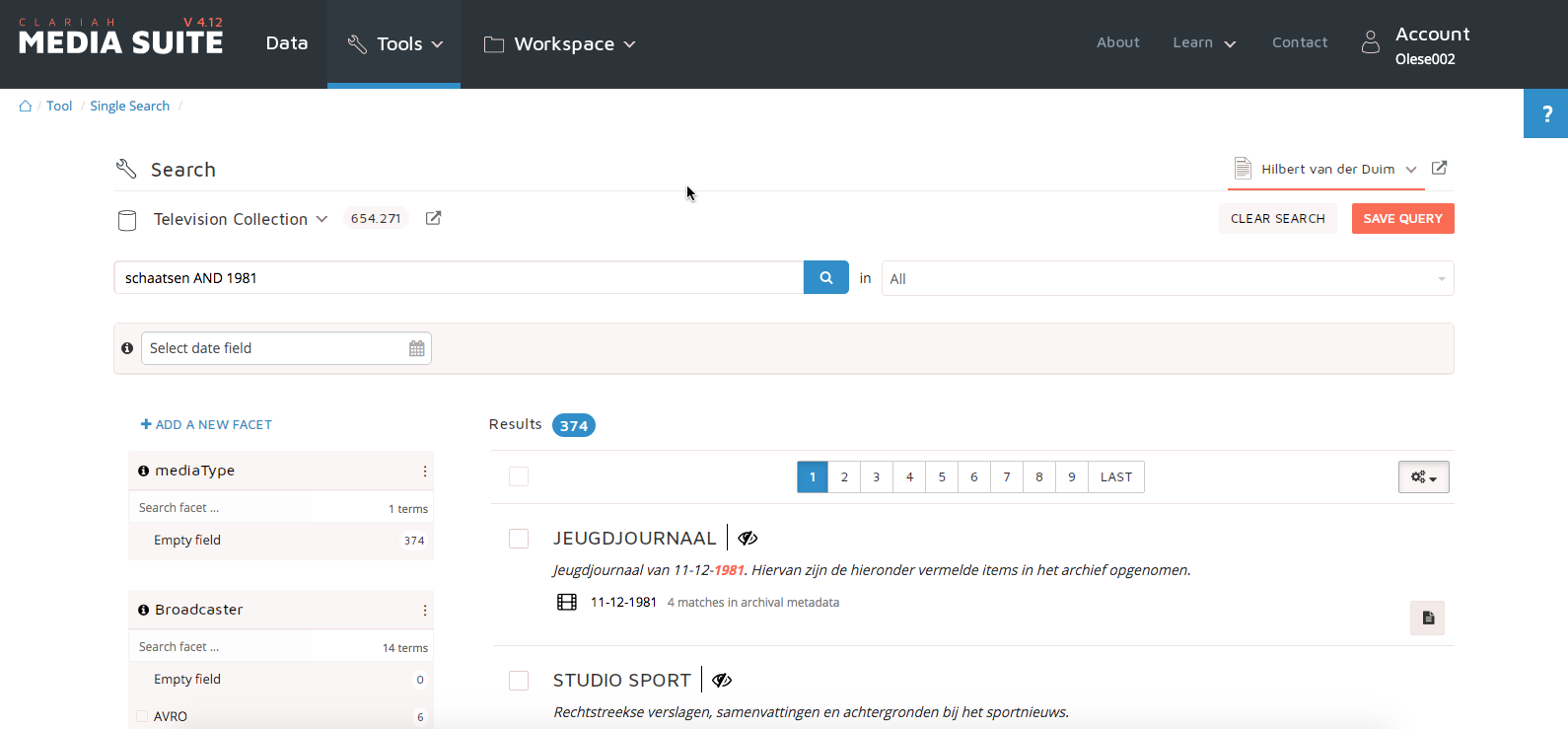
-
You now need to find items to enter into your corpus relating to Hilbert van der Duim’s participation in the World Championship in Oslo in 1981
-
Try multiple search terms relating to Hilbert van der Duim in various combinations. There are several relevant terms you can use. To get started, you may try the following:
- Hilbert van der Duim, schaatsen 1981, Leen Pfrommer 1981
-
Take a moment to reflect on which terms work well . Which terms give the most relevant results and why do you think so?
-
Try to make a boolean query with these terms:
- To make your searches more targeted you may add Boolean query operators such as: AND, OR, NOT, Asterisk, Parentheses, Quotation Marks (if clarification is needed, see also Media Suite Boolean query how-to guide: https://bit.ly/2WLTWOK )
3. Find Items in the Television Collection II
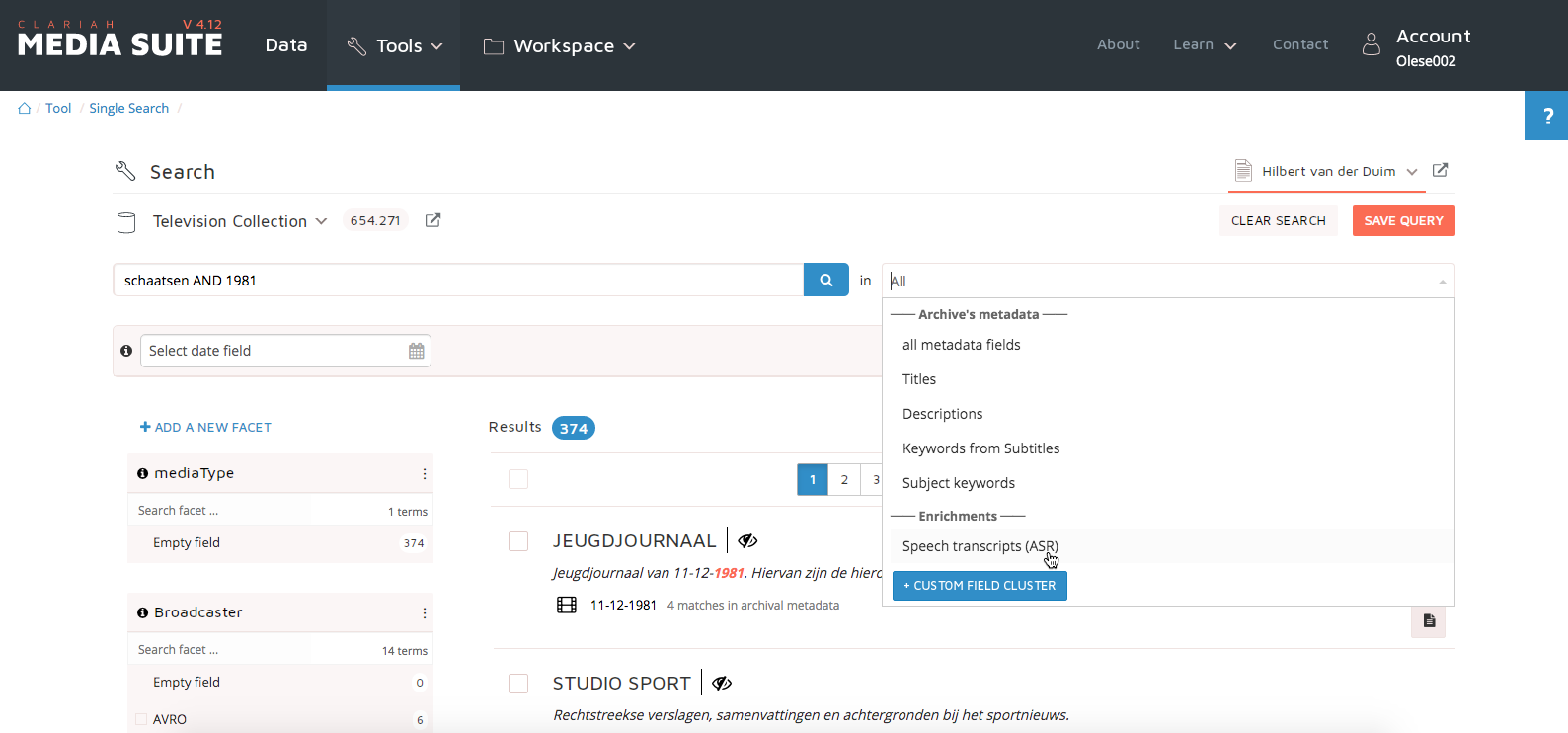
-
In addition to putting together queries that target your search in the best possible way, you may also use the search tool’s facets to narrow down your results . The facets are integrated into various functions of the search interface.
-
In the left hand column, you may use facets such as mediaType, Broadcaster, Genre or Keyword. Try to play around with these facets based on one of your queries to see which gives the most results relating to Hilbert van der Duim’s participation in the World Championship in Oslo in 1981.
-
Take a moment to reflect : what do the results say about the circulation of footage of this event according to you? Which broadcaster and genre are the ones mostly associated with the event and what may this say about the process of canon formation the clip has been part of?
-
In the search field on the right in the upper part of the search interface (the search field to the right of the keyword field) you filter your results based on data type . For instance, you may choose to search simply on titles or metadata descriptions, or to search on data generated through Automatic Speech Recognition (ASR) instead of the metadata. Try to play around with these options and see what gives the most relevant results .
-
Take a moment to reflect : what do the results say about the degree to which the data you search shape your research results? How do the results retrieved using archival metadata differ from the ones you obtain searching ASR data?
4. Store and retrieve queries

-
Once you have figured out which queries seem to work well, you may want to save those queries to make sure you can explore the results further another time
-
You may save one or more query parameters (search term, facets, etc.) by clicking “Save Query” button in the upper right corner
-
Once you have clicked the “Save Query” button, the query will have been saved to your active user project
-
NB! Even with a saved query that you have used before, research results may not always be the same every time, for instance if new metadata or ASR data has been added to the environment since you last used it
5. Bookmark items
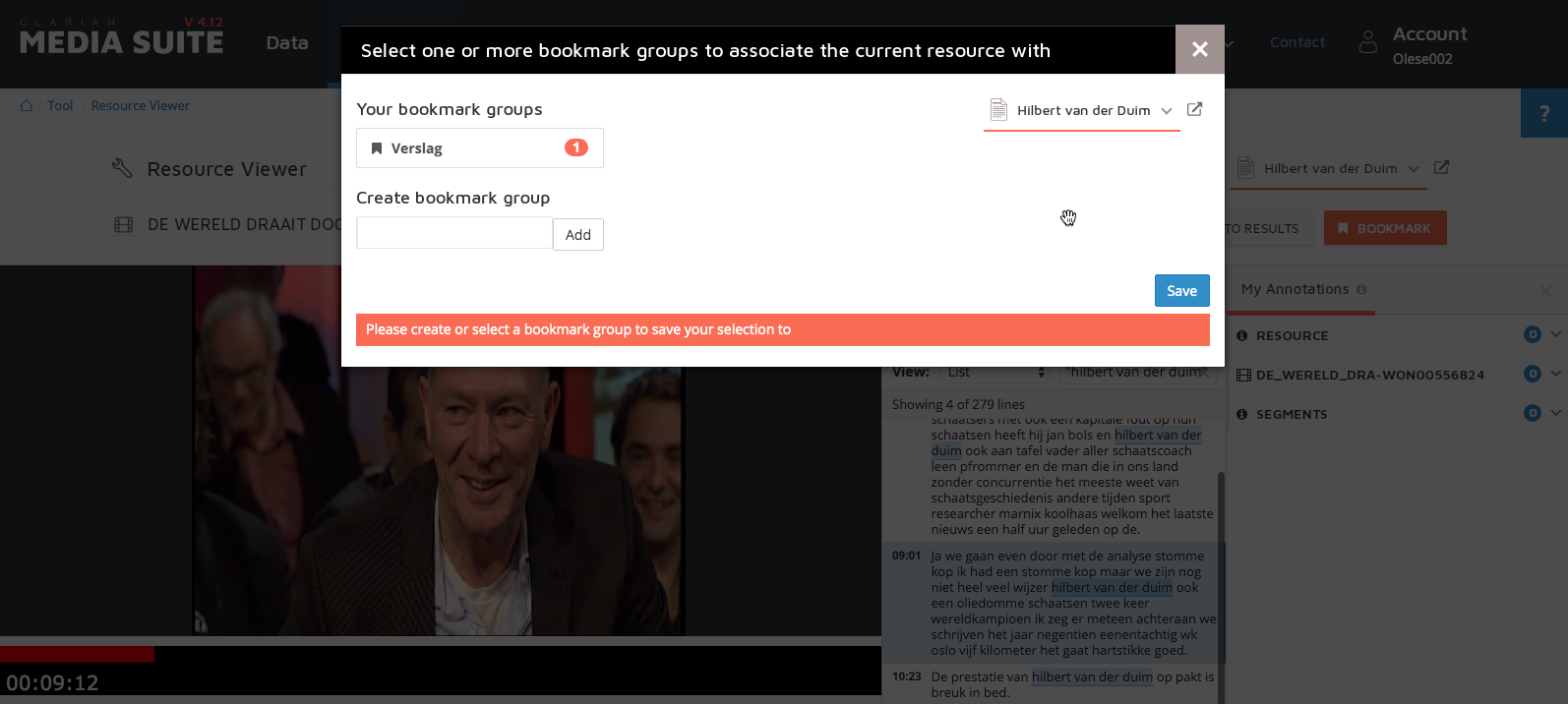
-
Once you have found items that you want to enter into your corpus you need to bookmark those item to your project
-
To bookmark a chosen item click “Bookmark” . This will open the bookmark window
-
To be able to save the item to your corpus you need to add it to a bookmark group in the bookmark window (if necessary create a bookmark group for your bookmarks in the pop-up window)
-
Try to enter as many relevant items as possible relating to Hilbert van der Duim’s participation in the World Championship in Oslo in 1981. Make sure that your choices reflect the process of canon formation that you may discern in relation to the circulation of this event within different media items, genres and time periods
-
Now you have created a corpus. Take a moment to reflect and look more closely at the items you have chosen, what do they say about the presentation of the event and how the understanding of it has changed and gradually become a canonical moment of Dutch television history?